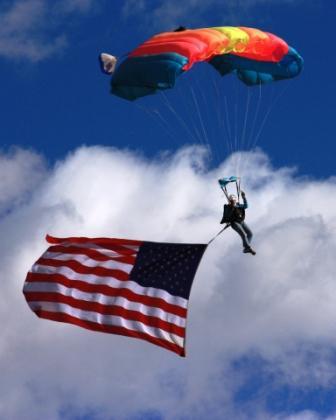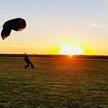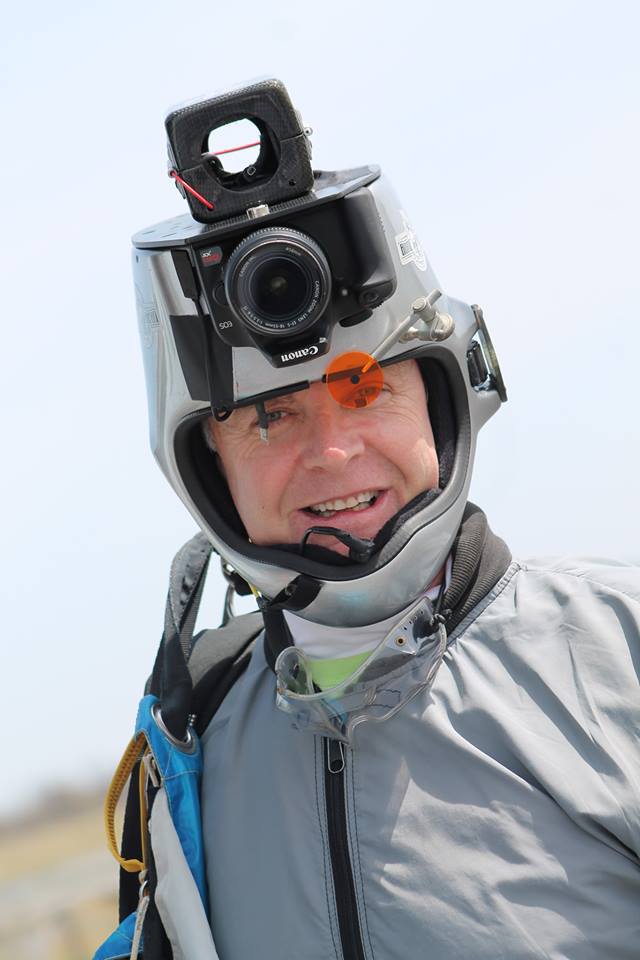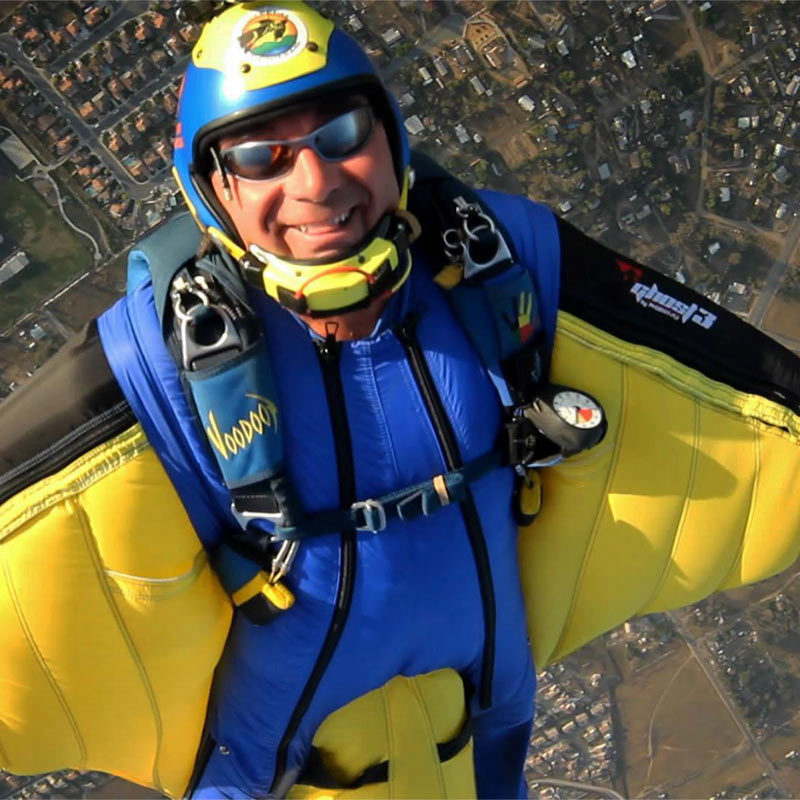A coach is trained and required to have jump experience thus that they are not expected or intended for catching, stabilzing, or pulling for students. As such, the best thing they can do is to follow the dive plan, and track off at the correct time, hopefully helping the student to understand that the skydive is over.
An AFF I has a higher level of required experience, and is trained to catch, stabilze and pull for students. As such, they have more options available to them when dealing with problems on a skydive, be it student, coach, or even a licensed jumper.
The coach should never deviate from their stated purpose, that being to dirt dive, gear checks, monitor the student in the plane and freefall, observe the canopy control and debrief the student.
As for the AFFI, the 'generally accepted' policy is that you stop chasing the student at 2k, when you are 'supposed to' open your own parachute. As I mentioned before, if you don't have hand-on-harness by 1500ft, your chances are slim of beating the Cypres, not being involved in a Cypres-induced wrap, or being able to deploy both the student and yourself, so you might as well give up.
The difference is that an AFF I would know this, and have a better chance of having the situational awareness to see if they would make that 'cut off' altitude or not. If you're at 2500ft and still 50 ft from a student spinning on their back, you know to just dump because you know how long it would take to get there and get to the handle. A coach might just 'keep trying' because they have no experience or training for them to know what's really involved in pulling for another jumper.
The other difference, and this is not in all cases, but most, is that the majority of AFF Is would never let things get that far out of hand. They would never be that far away in the first place, and would never let a situation develop to the point where they were so far out of their slot on the bottom end of the skydive.
nigel99 143
I had thought that some people were saying, that because it is a coach jump you should folllow the coach rule set, EVEN if you are an AFF-I. That means that even though you have the ability to catch and stabilise, you shouldn't because it is a coach jump.
I realize that chasing someone when you are not trained to do so, could easily place you both in more danger than following the rules.
QuoteI had thought that some people were saying, that because it is a coach jump you should folllow the coach rule set, EVEN if you are an AFF-I. That means that even though you have the ability to catch and stabilise, you shouldn't because it is a coach jump.
I think some people might be saying that. I disagree with that point (obviously).
ufk22 32
QuoteThanks for explaining.
I had thought that some people were saying, that because it is a coach jump you should folllow the coach rule set, EVEN if you are an AFF-I. That means that even though you have the ability to catch and stabilise, you shouldn't because it is a coach jump.
My point was you should follow one or the other.
From what's been posted about this dive...
Student on his back at 6K, back on his belly at 4.5K.
1. As a coach, at 5.5K you should immediately wave off, track and deploy, hopefully in his line of sight.
2, As AFF-I, you have the option of docking, rollover if necessary, give him the pull sign and deploying for him if he gets below 4K.
In this case, neither was done. The Instructor gave hand signal for altitude awareness, backslid, and didn't deploy til after the student had turned and initiated a low track with his back to her. With the student tracking away below 3.5K, the chances of catching and deploying for the student were getting slim, so I'm not saying that the Instructor should have then been chasing the student down. The deployment by the coah at 3.5K seemed to be the only thing done right, but it was done after the coach was no longer in the student's view. A dump at 4K with adequate seperation (per the SIM and IRM), before the student turned, would have been a better option.
QuoteMy point was you should follow one or the other.
And I would disagree with that given the multi-rating situation.
Since you didn't understand my post, please re-read Dave's post. He does have a way with words. Thanks, Dave.
Your assumptions about my postings are entirely off-base.
Your comment,
"Otherwise, I can only assume this is more of the "my friends and I are always right in our decisions, but people I don't know or don't like don't know shit" school of skydiving. "
...was uncalled for.
I think we're all Bozos on this bus.
Falcon5232, SCS8170, SCSA353, POPS9398, DS239
ufk22 32
QuoteQuoteMy point was you should follow one or the other.
And I would disagree with that given the multi-rating situation.
So if I have multiple ratings, I don't need to follow the proper procedure for either of them???
Since you didn't understand my post, please re-read Dave's post. He does have a way with words. Thanks, Dave.
Quote
Not that I didn't understand, just looking for some specific. Your response didn't really say anything.
Your assumptions about my postings are entirely off-base.
Your comment,
"Otherwise, I can only assume this is more of the "my friends and I are always right in our decisions, but people I don't know or don't like don't know shit" school of skydiving. "
...was uncalled for.
Well, this thread started with a coach without a lot of experience that watched a student go low, didn't take appropriate action, and then pulled low.
He got totally reamed on this board, and not just for the altitude he pulled at.
The situation in the later post was an experienced coach and AFF-I who also just watched a student go low, didn't take appropriate action, but did manage to pull at altitude (even if it was too late for her student to see), and you seem to think her actions were appropriate.
I'm kinda slow on the uptake, so what I'm asking for is an explaination of why your responses about these two very similar situation (other than the deployment alltitude of the Coach/Instructor) seem very different.
Scrumpot 1
QuoteA coach is trained and required to have jump experience thus that they are not expected or intended for catching, stabilzing, or pulling for students. As such, the best thing they can do is to follow the dive plan, and track off at the correct time, hopefully helping the student to understand that the skydive is over.
An AFF I has a higher level of required experience, and is trained to catch, stabilze and pull for students. As such, they have more options available to them when dealing with problems on a skydive, be it student, coach, or even a licensed jumper.
Right. And Jen's initial post, I think, was put up specifically to illustrate the challenges, of when one is also an AFF-I, effectively "taking OFF the AFF-I hat", and restricting oneself in-air, during a coaching jump, to acting strictly in the role of a coach. I think her post also had great value to us to look at, and consider in that vein/light and illustration. I'm sure she had absolutely no intent on it becoming "dissected" so vociferously since, although she has indeed been gracious in her follow-up(s) to it, and further enhancing others consideration of it (and the subject matter over all). However, I cannot help but to now feel somewhat guilty for (being party to) any, clearly now getting to be, well "over-dissection" and supposition resulting of her otherwise clearly valuable "real life" anecdote, example, and provided perspective.
Just for the record.
I feel the roles are clear, and should be clearly separated. However difficult that may be to actually perform when "in the heat of battle" situation. In other words, when doing an AFF jump - exercising there, AFF procedures. When doing a Coaching jump, exercising there, strictly Coaching prescribed procedures. Someone also mentioned I think somewhere, that following these (I think again - clearly defined) procedures and not deviating from them, might also become your only protection from potential liability, and/or at the very least, being called to task as to explaining more clearly why you deviated from them.
It's a TOUGH job, with very real responsibilities and accountability. And anyone who approaches it (either AFF or Coaching) lightly or tritely could be setting themselves up for a very rude awakening.
Jen's (Perigrinrose) posts and perspective, based upon her real life experience she has been willing to share (THANK YOU JEN - FOR THE RECORD) have provided great added value to this conversation, and as with others (and all the other added perspectives to consider) - I appreciate 'em!
Scrumpot 1
QuoteI had thought that some people were saying, that because it is a coach jump you should folllow the coach rule set, EVEN if you are an AFF-I. That means that even though you have the ability to catch and stabilise, you shouldn't because it is a coach jump.
Actually for the record - I have said that. I think that the clear delineation between the 2, and establishing the full understanding in advance of that happening (on both the "students" and the coaches part) THEN DOING IT - i.e. plan the dive, DIVE THE PLAN ...is critical. And, crucial to also avoiding any (roles/actual performance expectation) potential in-air confusion.
wolfriverjoe 1,340
QuoteWell, this thread started with a coach without a lot of experience that watched a student go low, didn't take appropriate action, and then pulled low.
He got totally reamed on this board, and not just for the altitude he pulled at.
The situation in the later post was an experienced coach and AFF-I who also just watched a student go low, didn't take appropriate action, but did manage to pull at altitude (even if it was too late for her student to see), and you seem to think her actions were appropriate.
I'm kinda slow on the uptake, so what I'm asking for is an explaination of why your responses about these two very similar situation (other than the deployment alltitude of the Coach/Instructor) seem very different.
Because although the situations were very similar, the skill level of the instructor was very different.
As Perigrinerose (Jen) noted, it can be difficult for an AFF-I to "put away" the AFF-I skills and do "just" a coach jump. Stuff that is appropriate for an instructor to do on an AFF jump isn't so on a coach jump...
Until it goes bad. At which point an AFF-I has a much deeper toolbox of skills to use.
Which, under the right (or wrong) set of circumstances can mean the difference between a thread here, or one in Incidents.
"~ya don't GET old by being weak & stupid!" - Airtwardo
DSE 3
Quote
Because although the situations were very similar, the skill level of the instructor was very different.
As Perigrinerose (Jen) noted, it can be difficult for an AFF-I to "put away" the AFF-I skills and do "just" a coach jump. Stuff that is appropriate for an instructor to do on an AFF jump isn't so on a coach jump...
Until it goes bad. At which point an AFF-I has a much deeper toolbox of skills to use.
Which, under the right (or wrong) set of circumstances can mean the difference between a thread here, or one in Incidents.
This is all true, but to throw another viewpoint into the mix;
If you're an Instructor, have major separation from your student (which seems to be the case in both situtions being discussed in this thread) and both instructor and student are burning through 2500' and the Instructor is still tossing signals.
You're not going to catch the student and deploy for them by 2K. Therefore, the best course of action (IMO) is still to turn and burn, look over your shoulder to be sure the student isn't tracking with you, and deploy to notify the student they should be deployed.
wolfriverjoe 1,340
QuoteQuote
Because although the situations were very similar, the skill level of the instructor was very different.
As Perigrinerose (Jen) noted, it can be difficult for an AFF-I to "put away" the AFF-I skills and do "just" a coach jump. Stuff that is appropriate for an instructor to do on an AFF jump isn't so on a coach jump...
Until it goes bad. At which point an AFF-I has a much deeper toolbox of skills to use.
Which, under the right (or wrong) set of circumstances can mean the difference between a thread here, or one in Incidents.
This is all true, but to throw another viewpoint into the mix;
If you're an Instructor, have major separation from your student (which seems to be the case in both situtions being discussed in this thread) and both instructor and student are burning through 2500' and the Instructor is still tossing signals.
You're not going to catch the student and deploy for them by 2K. Therefore, the best course of action (IMO) is still to turn and burn, look over your shoulder to be sure the student isn't tracking with you, and deploy to notify the student they should be deployed.
Absolutely. Which is why the non-AFF-I coach in the OP was wrong, and perigrinerose wasn't. He chased down way too low. She pulled at 3500, to try and signal the student to pull (post 113).
The AFF-I on a coach jump has a lot more skills and experience, and far better judgement in these sorts of situations. And is in a much better place to use that judgement to do "non-coach" stuff.
"~ya don't GET old by being weak & stupid!" - Airtwardo






No instructor is obliged to "chase a student into the ground". So while the rules tell you to give up at x altitude and save your life, under certain circumstances he will bend or break those rules knowing full well that he is compromising his own safety.
I guess rules for instructors come in 2 buckets, those to protect the well being of your students, and those to protect you.
I am just stating my understanding of his post(s). I may be completely wrong though.
Share this post
Link to post
Share on other sites